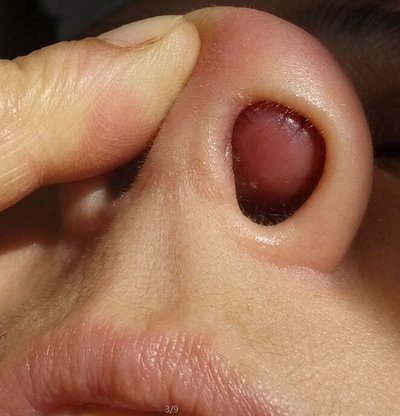What is basal ganglia hematoma?
summary
The basal ganglia, also known as the basal nucleus, is a gray matter mass buried deep in the bilateral cerebral hemispheres, which is the main structure of the extrapyramidal system. It mainly includes caudate nucleus, lentiform nucleus (putamen and globus pallidus), platen nucleus and amygdaloid complex. What is the cause of basal ganglia hematoma?
What is basal ganglia hematoma?
Differential diagnosis, with the basal ganglia hemorrhage differentiation, the basal ganglia hemorrhage symptoms are more serious than this disease, and most of the middle-aged and elderly patients with hypertension suddenly attack in the activity or emotional excitement, quickly appear hemiplegia, aphasia and other focal neurological deficit symptoms, as well as severe headache, vomiting and disturbance of consciousness, often highly suggestive of cerebral hemorrhage, CT can be diagnosed without examination.

Operation method: for simple basal ganglia hematoma, drilling and puncture drainage can be used, that is, drilling or cone hole in the frontal or temporal part, avoiding the important functional area of the brain, puncture the hematoma according to the position shown by CT, carefully extract the liquid part, if 60% of the hematoma can be discharged, the purpose of pressure reduction has been achieved, put the catheter as postoperative drainage, and suture the wound. If necessary, urokinase can be injected several times under CT monitoring to promote the discharge of solid blood clot after liquefaction. If the simple basal ganglia hematoma has broken into the ventricle, the catheter should be placed directly in the ventricle for drainage.

For complex basal ganglia hematoma with ipsilateral intracranial hematoma, it is better to design bone flap or bone window craniotomy according to the position shown on CT, and solve two hematomas simultaneously through one person's way. If the operation can not be completed at one time or the lesions are located on different sides, bone window craniotomy or at least extended drilling should be performed for basal ganglia hematoma in addition to the removal of complex hematoma, The cerebral cortex was cut through the lateral fissure or superior temporal gyrus, and the hematoma of basal ganglia was removed under direct vision to stop bleeding completely.

matters needing attention
1. The disease is a traumatic disease without preventive measures. Pay attention to safety and avoid trauma. 2. Once brain injury occurs, it should be diagnosed and treated as soon as possible. 3. Combined with other intracranial hematomas, and the prognosis is poor.














